-
 Bitcoin
Bitcoin $83,111.9693
0.84% -
 Ethereum
Ethereum $1,832.3429
-0.84% -
 Tether USDt
Tether USDt $0.9998
0.04% -
 XRP
XRP $2.1677
4.57% -
 BNB
BNB $605.9433
0.49% -
 Solana
Solana $125.2802
-0.07% -
 USDC
USDC $1.0000
-0.03% -
 Dogecoin
Dogecoin $0.1699
-0.20% -
 Cardano
Cardano $0.6781
1.58% -
 TRON
TRON $0.2305
-1.38% -
 Toncoin
Toncoin $3.8204
3.62% -
 Chainlink
Chainlink $13.7240
0.24% -
 UNUS SED LEO
UNUS SED LEO $9.6671
-0.44% -
 Stellar
Stellar $0.2695
1.49% -
 Avalanche
Avalanche $19.3162
-2.79% -
 Sui
Sui $2.3805
1.98% -
 Shiba Inu
Shiba Inu $0.0...01262
-0.66% -
 Hedera
Hedera $0.1717
0.70% -
 Litecoin
Litecoin $86.0948
0.61% -
 Polkadot
Polkadot $4.1084
0.33% -
 MANTRA
MANTRA $6.3914
1.17% -
 Bitcoin Cash
Bitcoin Cash $306.7980
1.25% -
 Bitget Token
Bitget Token $4.6586
0.11% -
 Dai
Dai $0.9999
0.00% -
 Ethena USDe
Ethena USDe $1.0000
0.08% -
 Pi
Pi $0.7674
-6.66% -
 Hyperliquid
Hyperliquid $12.5199
0.25% -
 Monero
Monero $216.2626
0.23% -
 Uniswap
Uniswap $5.9814
-1.19% -
 NEAR Protocol
NEAR Protocol $2.7067
3.42%
How to connect SafePal S1 with MetaMask?
SafePal S1 enhances MetaMask's security by using it as a secure signing device, keeping private keys safe on the hardware wallet. Follow steps carefully for secure connection.
Mar 27, 2025 at 02:00 pm
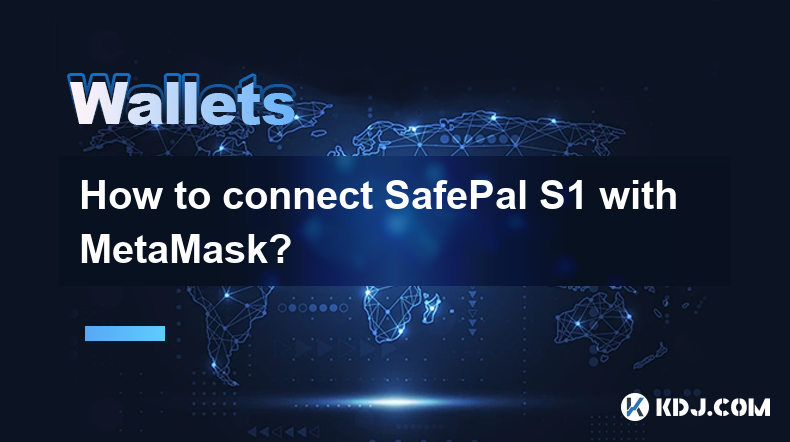
Understanding SafePal S1 and MetaMask Integration
The SafePal S1 hardware wallet prioritizes security for your crypto assets. MetaMask, on the other hand, is a popular browser extension wallet offering convenient access to decentralized applications (dApps). While they serve different purposes, connecting them allows you to leverage the security of the SafePal S1 with the usability of MetaMask. This connection doesn't involve directly linking the wallets; instead, it utilizes the SafePal S1 as a secure signing device for MetaMask transactions. This means you retain the enhanced security of your private keys residing solely on your hardware wallet.
Why Connect SafePal S1 to MetaMask?
Connecting your SafePal S1 to MetaMask enhances security significantly. MetaMask, being a software wallet, is vulnerable to phishing and malware attacks. By using your SafePal S1 to sign transactions, you add a crucial layer of protection. Your private keys remain safely stored on your hardware wallet, preventing unauthorized access even if your computer is compromised. This setup provides the best of both worlds: the convenience of MetaMask's interface and the robust security of a hardware wallet.
Step-by-Step Guide to Connecting SafePal S1 and MetaMask
Connecting your SafePal S1 to MetaMask requires a few simple steps. It's crucial to follow these instructions carefully to ensure a secure connection. Remember, never share your seed phrase with anyone.
Step 1: Ensure your SafePal S1 is updated to the latest firmware. This is essential for compatibility and security. Check the SafePal app for updates.
Step 2: Open the SafePal App on your mobile device. This app will be your intermediary between the hardware wallet and MetaMask.
Step 3: Navigate to the "DApp Browser" section within the SafePal App. This feature allows interaction with various decentralized applications.
Step 4: Access MetaMask through the SafePal App's DApp Browser. You'll need to open MetaMask in your browser and ensure it's connected to the network you intend to use.
Step 5: Initiate a transaction in MetaMask. This could be anything from sending tokens to interacting with a dApp.
Step 6: Approve the transaction on your SafePal S1. Once you initiate a transaction in MetaMask, the SafePal S1 will prompt you to confirm the transaction details on its screen. Review carefully and approve only if everything is correct.
Step 7: Complete the transaction. After confirming on your SafePal S1, the transaction will be finalized on the blockchain.
Step 8: Always double-check the transaction details on both your SafePal S1 and MetaMask before confirming. This helps prevent accidental or malicious transactions.
Troubleshooting Common Issues
During the connection process, you might encounter some issues. Here are some common problems and their solutions:
Problem: SafePal S1 is not detected by the SafePal App. Solution: Ensure Bluetooth is enabled on your mobile device and that your SafePal S1 is within range. Try restarting both your phone and the SafePal S1.
Problem: MetaMask doesn't recognize the SafePal S1. Solution: Ensure you're using the latest versions of both the SafePal App and MetaMask. Check your browser's extensions to make sure MetaMask is properly installed and enabled.
Problem: Transaction fails to execute. Solution: Verify the network settings are consistent between your SafePal S1, MetaMask, and the blockchain you are using. Check sufficient balance in your wallet.
Problem: Incorrect transaction details displayed on SafePal S1. Solution: Carefully review all transaction details on both MetaMask and your SafePal S1. If there's a discrepancy, do not proceed. Contact SafePal support if needed.
Security Best Practices
Remember that security is paramount when handling cryptocurrencies. Here are some crucial security practices to follow:
Never share your SafePal S1 seed phrase with anyone. This phrase grants complete access to your funds.
Keep your SafePal S1 firmware updated. Regular updates patch security vulnerabilities.
Use strong and unique passwords for your SafePal App and MetaMask accounts.
Be wary of phishing attempts. Never click on suspicious links or provide your seed phrase to unsolicited requests.
Always verify the contract address before interacting with any dApp to avoid scams.
Frequently Asked Questions
Q: Can I use SafePal S1 with multiple MetaMask accounts?
A: Yes, you can use your SafePal S1 to sign transactions for multiple MetaMask accounts, but you'll need to manage them separately within the SafePal App and MetaMask.
Q: Is my private key stored on MetaMask when using SafePal S1?
A: No, your private key remains securely stored on your SafePal S1 hardware wallet. MetaMask only interacts with the public key.
Q: What happens if my phone is lost or stolen?
A: Your funds remain safe as long as you haven't disclosed your SafePal S1 seed phrase. You can recover your SafePal S1 with your seed phrase on a new device.
Q: Can I use SafePal S1 with MetaMask on multiple devices?
A: While you can use MetaMask on multiple devices, the SafePal S1 connection is typically device-specific due to Bluetooth pairing. You'll need to re-pair your SafePal S1 with each device.
Q: What if I forget my SafePal S1 PIN?
A: You'll need your recovery seed phrase to regain access to your wallet. Never share this phrase with anyone. Refer to SafePal's support documentation for the recovery process.
Disclaimer:info@kdj.com
The information provided is not trading advice. kdj.com does not assume any responsibility for any investments made based on the information provided in this article. Cryptocurrencies are highly volatile and it is highly recommended that you invest with caution after thorough research!
If you believe that the content used on this website infringes your copyright, please contact us immediately (info@kdj.com) and we will delete it promptly.
- Binance Coin (BNB) Whales Migrate Funds to IntelMarkets (INTL) After 340% Gains
- 2025-03-30 19:10:12
- A wave of Studio Ghibli-inspired images has taken over social media
- 2025-03-30 19:10:12
- Ever Feel Like You Always Miss “the One” in Crypto?
- 2025-03-30 19:05:13
- Remittix (RTX) Returns to the Spotlight as Dogecoin (DOGE) Holders Face Disappointing Situations
- 2025-03-30 19:05:13
- Bitcoin (BTC) and Ethereum (ETH) Exchange-Traded Funds (ETFs) Diverge in Performance
- 2025-03-30 19:00:13
- Cardano (ADA) Price Prediction: Where Is Resistance And Support?
- 2025-03-30 19:00:13
Related knowledge
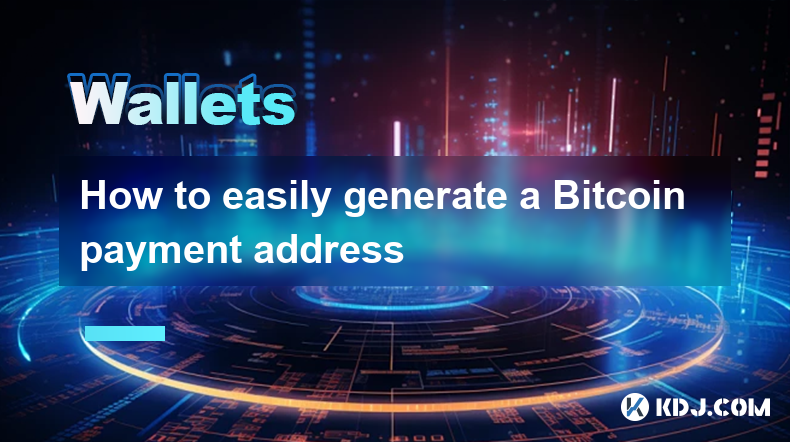
How to easily generate a Bitcoin payment address
Mar 29,2025 at 10:49am
Generating a Bitcoin payment address might seem daunting, but it's actually quite straightforward. This process is crucial for receiving Bitcoin, as each transaction requires a unique address. Understanding how this works is fundamental to using Bitcoin effectively. This guide will walk you through the simple steps, regardless of your technical experti...
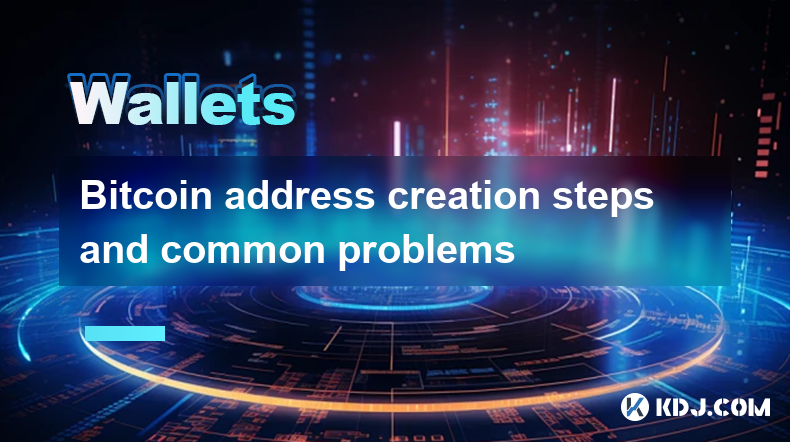
Bitcoin address creation steps and common problems
Mar 30,2025 at 06:07am
Understanding Bitcoin AddressesA Bitcoin address is a unique identifier, similar to a bank account number, used to receive Bitcoin. It's a string of alphanumeric characters generated from a public key, derived from your private key. Understanding the distinction between public and private keys is crucial for Bitcoin security. Your private key should be...
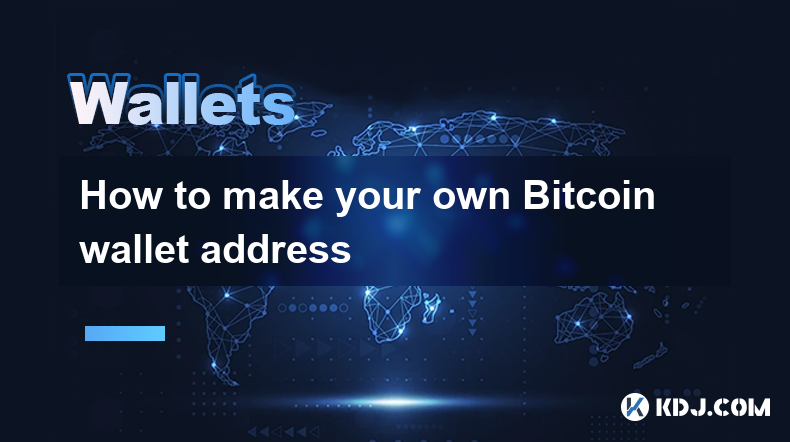
How to make your own Bitcoin wallet address
Mar 29,2025 at 08:42pm
Creating your own Bitcoin wallet address is crucial for securing and managing your Bitcoin holdings. It allows you to independently receive and send Bitcoin without relying on third-party services. This process involves understanding the different types of wallets and choosing the one that best suits your needs and technical expertise. Incorrectly gene...
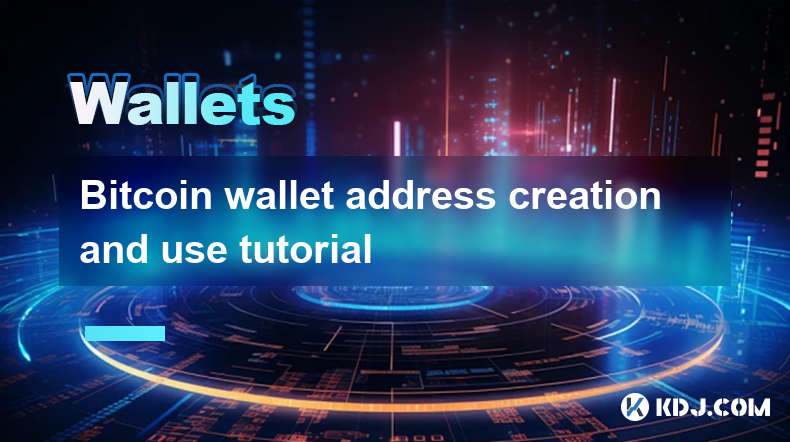
Bitcoin wallet address creation and use tutorial
Mar 29,2025 at 10:14pm
Understanding Bitcoin Wallet AddressesA Bitcoin wallet doesn't store Bitcoin in the way a traditional bank account does. Instead, it stores private keys, which are cryptographic secrets allowing you to access and spend your Bitcoin. Your Bitcoin address, on the other hand, is a public identifier, like an email address, that others can use to send you B...

Bitcoin address generation and secure storage guide
Mar 30,2025 at 08:07am
Understanding Bitcoin AddressesA Bitcoin address is essentially your public key, a string of alphanumeric characters used to receive Bitcoin. It's analogous to your bank account number. Unlike your private key, which is crucial for spending your Bitcoin, your address can be shared publicly without compromising your funds. Generating a new address is sim...
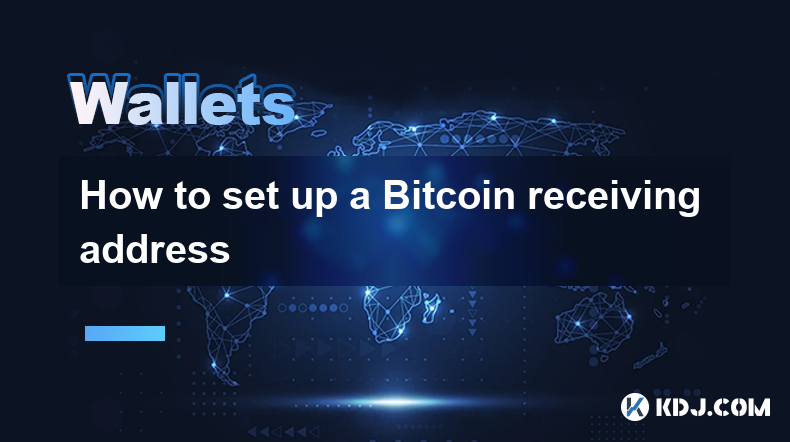
How to set up a Bitcoin receiving address
Mar 30,2025 at 06:14pm
Understanding Bitcoin Receiving AddressesA Bitcoin receiving address is essentially your unique identifier on the Bitcoin network. It's a string of alphanumeric characters that allows others to send Bitcoin to you. Think of it like your bank account number, but specifically for Bitcoin. You need a receiving address to receive Bitcoin. Crucially, you ca...

How to easily generate a Bitcoin payment address
Mar 29,2025 at 10:49am
Generating a Bitcoin payment address might seem daunting, but it's actually quite straightforward. This process is crucial for receiving Bitcoin, as each transaction requires a unique address. Understanding how this works is fundamental to using Bitcoin effectively. This guide will walk you through the simple steps, regardless of your technical experti...

Bitcoin address creation steps and common problems
Mar 30,2025 at 06:07am
Understanding Bitcoin AddressesA Bitcoin address is a unique identifier, similar to a bank account number, used to receive Bitcoin. It's a string of alphanumeric characters generated from a public key, derived from your private key. Understanding the distinction between public and private keys is crucial for Bitcoin security. Your private key should be...

How to make your own Bitcoin wallet address
Mar 29,2025 at 08:42pm
Creating your own Bitcoin wallet address is crucial for securing and managing your Bitcoin holdings. It allows you to independently receive and send Bitcoin without relying on third-party services. This process involves understanding the different types of wallets and choosing the one that best suits your needs and technical expertise. Incorrectly gene...

Bitcoin wallet address creation and use tutorial
Mar 29,2025 at 10:14pm
Understanding Bitcoin Wallet AddressesA Bitcoin wallet doesn't store Bitcoin in the way a traditional bank account does. Instead, it stores private keys, which are cryptographic secrets allowing you to access and spend your Bitcoin. Your Bitcoin address, on the other hand, is a public identifier, like an email address, that others can use to send you B...

Bitcoin address generation and secure storage guide
Mar 30,2025 at 08:07am
Understanding Bitcoin AddressesA Bitcoin address is essentially your public key, a string of alphanumeric characters used to receive Bitcoin. It's analogous to your bank account number. Unlike your private key, which is crucial for spending your Bitcoin, your address can be shared publicly without compromising your funds. Generating a new address is sim...

How to set up a Bitcoin receiving address
Mar 30,2025 at 06:14pm
Understanding Bitcoin Receiving AddressesA Bitcoin receiving address is essentially your unique identifier on the Bitcoin network. It's a string of alphanumeric characters that allows others to send Bitcoin to you. Think of it like your bank account number, but specifically for Bitcoin. You need a receiving address to receive Bitcoin. Crucially, you ca...
See all articles





















































































